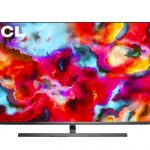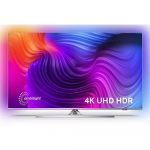Transform Every Meeting — Audio‑Visual Systems That Inspire Collaboration
Whether you’re briefing a team, hosting a council meeting, or teaching a class, the quality of your audio‑visual (AV) system determines how clearly people see, hear, and participate. This guide walks through the core components—displays, projectors, microphones, speakers, and connectivity—and shows how to design reliable, user‑friendly rooms that work every time.
Displays & Projectors: Sizing for the Room
Start with viewing distance and content type. For data‑dense dashboards, a bright 4K display improves legibility in large rooms. For multipurpose spaces, laser projectors provide large images with long‑life light engines and low maintenance. Consider ambient light, screen gain, and mounting positions to reduce glare and shadows.
Audio: Voice Intelligibility First
Most complaints in meetings stem from audio. Prioritize microphones and speakers tuned for speech, not music. Ceiling arrays or beamforming mics capture multiple talkers; table or wireless mics are ideal for flexible layouts. Add acoustic treatment where needed—carpet, wall panels, and curtains improve clarity significantly.
Connectivity & Control
Keep connections simple: HDMI/USB‑C at the table, secure wireless presenting, and labeled wall plates. A basic control panel with power, source, volume, and mute prevents mistakes. For complex rooms, touch panels can automate scenes and device sequencing.
Hybrid Collaboration
Hybrid meetings require cameras with wide fields of view, echo cancellation, and platform‑friendly endpoints. Consider dual displays—one for content and one for remote participants. Add confidence monitors for presenters and visual timers to keep sessions on track.
Accessibility, Security & Sustainability
- Accessibility: Assistive listening, captioning support, and ADA sight‑line considerations.
- Security: Network segmentation for AV devices; firmware updates via trusted channels.
- Sustainability: Low‑power standby, laser light engines, and occupancy‑based power control.
Room Types & Reference Designs
Huddle rooms benefit from single displays, small soundbars, and auto‑framing cameras. Conference rooms add beamforming mics and table connectivity. Council chambers require voice reinforcement, multiple inputs, and recording/streaming. Classrooms need durable wiring, simple controls, and document cameras.
Frequently Asked Questions
Q1. Do we need 4K in every room?
For data‑dense content or large rooms, 4K helps readability. Smaller spaces that show slides or video calls may be fine with 1080p.
Q2. Which microphones are best for hybrid meetings?
Beamforming ceiling arrays or table bundles with echo cancellation capture multiple talkers clearly and reduce background noise.
Q3. Can we keep controls simple?
Yes—most rooms only need power, source select, volume, and mute. Advanced rooms can use touch panels with presets.
Q4. What about TAA‑aware sourcing?
We can design with TAA‑aware components and provide documentation on request for compliant procurement.
Why SOLONY
We specify proven AV components, provide installation guidance, and offer orientation so end‑users can present confidently on day one. From huddle rooms to council chambers, SOLONY helps you deliver meetings that just work.








